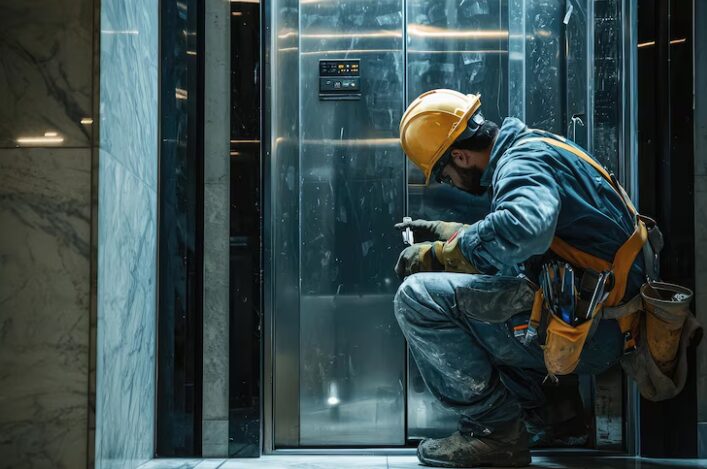Elevator technology is evolving rapidly, and with stricter safety regulations, smarter control systems, and increased user expectations, elevator technicians need to stay ahead of the curve. Understanding the most critical components of a lift system isn’t just helpful—it’s essential. Whether you’re a seasoned technician or new to the field, mastering the parts that keep modern lifts running smoothly will make you more effective, efficient, and valuable on the job.
In this guide, we break down the top lift parts every technician should be familiar with in 2025, highlighting their functions, common issues, and tips for maintenance. Let’s dive into what truly matters inside the elevator shaft.
The Heart of It All — Elevator Controller Units
Why Controller Units Matter More Than Ever
In 2025, controller units are more than just logic processors. They integrate with IoT platforms, offer predictive diagnostics, and enable remote updates. As a technician, being fluent in both traditional relay logic systems and modern microprocessor-based controllers is crucial.
Technician Tip
Always carry a portable diagnostic tool compatible with newer controller models. It saves time and improves your ability to troubleshoot quickly on-site.
Hoist Motors — Powering the Lift
AC vs. Gearless Traction Motors
Technicians should understand the differences between AC geared motors and modern gearless traction motors. Gearless systems, typically found in high-rise installations, offer smoother rides and greater efficiency, but demand a higher level of maintenance knowledge.
What to Watch
Check for overheating, unusual vibrations, and alignment issues. These are common red flags that, if ignored, can lead to major failures.
Door Operators — Safety and User Experience
Keeping Doors Running Smoothly
The door operator is one of the most frequently used lift parts and often the source of service calls. Technicians need to ensure precise door alignment, clean tracks, and well-calibrated sensors.
Common Upgrades in 2025
Newer door operators often include soft-close features and silent mechanisms. These parts require different adjustment techniques compared to legacy systems, so training on new models is a must.
Safety Gear and Governors — Your First Line of Defense
Understanding the Overspeed Governor
An overspeed governor ensures that the elevator car doesn’t descend too quickly. It’s tied directly to the safety gear mechanism, which can clamp onto the guide rails in emergencies. Technicians must know how to inspect, test, and reset these systems regularly.
Pro Tip
Familiarize yourself with the latest safety standards (such as EN 81 and ASME A17). Many of these standards have evolved to reflect the newer technologies in lift systems.
Lift Control Panels — The Nerve Center
Front-End Interface, Back-End Complexity
The lift control panel is where users interact with the system, but behind those buttons lies a complex interface of relays, boards, and communication lines. In 2025, most panels are touch-enabled or voice-assisted, and integrated with AI-based call allocation.
What Technicians Need to Know
When diagnosing issues, it’s important to check the logic board for dust, wear, or corrosion. Be aware of the unique configurations used in different manufacturer models.
Guide Rails and Rollers — Keeping the Ride Smooth
Guide Rails Explained
Guide rails help keep the elevator car aligned during travel. Misalignment or lubrication failure can cause rough rides or increased motor strain.
Maintenance Insight
Ensure all rollers and rail joints are clean and lubricated. Use precision tools to check for alignment—especially after any major system overhaul.
Lift Parts That Are Often Overlooked
While technicians regularly focus on motors and controllers, there are several lift parts that tend to be neglected but are equally important:
- Traveling cables : They provide power and signal transmission. Look for wear and fraying.
- Buffers : Installed at the bottom of the shaft, they prevent hard landings. Inspect for fluid leaks or damage.
- Interlocks : Ensure doors only open when safe. Misalignment here can trigger system faults.
Elevating Your Skills as a Technician in 2025
Staying current with modern elevator systems means investing time in understanding every component—big or small. The landscape of lift maintenance is changing with predictive maintenance software, smart sensors, and sustainability-focused upgrades. Technicians who can blend mechanical skill with digital know-how will continue to lead the field.
By mastering the lift parts discussed in this guide, you’re not only improving your diagnostic and repair skills—you’re contributing to safer, more reliable elevator systems that better serve the people who use them every day.

































